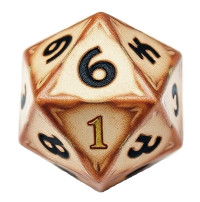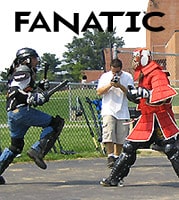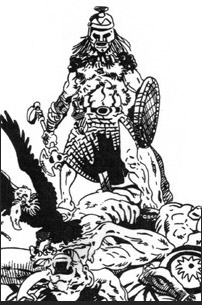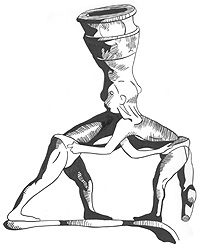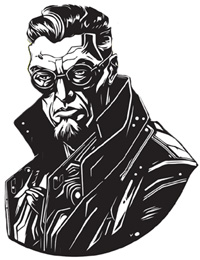Reading from pages 213-239 of Myth of the 20th Century, the 1982 Black Kite Edition
This chapter begins with the focus on the “retreat from theoretical materialism in science and art,” or the withdrawal from the icky and the depraved world of secular man, the world of post-spiritual humanity where faith is reduced to a desire for safety and prosperity. Rosenberg had lived through a period of social collapse and decadence similar to the situation in 2020s America. Revisionist and superior works of art and science are discussed and the connection between ancient Hellenic ideals of excellence and beauty of expression and the modern Renaissance, which rescued these worlds from beneath the rubble of Latin such as earlier, in epic, “Telemachos tore himself away from his other, the blue-eyed daughter of Zeus who sent him a favorable sailing wind,” and quotes “Homeros, as a man conscious of his being a master, avows:
‘For the resolute man always conducts best to a conclusion
Every work, even if he approaches from afar as a stranger.’
Rosenberg, evokes in this reader’s mind’s eye the ancient Hellenes as a mirror upon Modern Europe, and now America, with our former spirit as a seeking people stymied like Odysseus in the doorway of his own kingly palace, set to boxing against a beggar as the evil swine-men of the elite badger her for her company in bed.
He likens the modern banking and media corruption to the “swindlers, bringing with them countless trinkets in a dark ship,” from Phoenicia, the land of the Punic peoples who brought their purple cloth, and their phonetic alphabet to the Homeric Hellenes in dusky antiquity. The decadence of Socratic and Platonic thinking, of “glorifying the hair-splitter” is discussed as a similar end time in antiquity to the fate of pure, reductionist economic man in 1930. Alexander and Aristotle are proposed as models of relief, or rebooting the Arуan spirit. Plato, a wise fool who actually had a chance to be a one-man think tank for a Sicilian Tyrant and failed, proposed in his philosophy the rule of experts and specialists, much as we have today and who were circling the remnants of Western Culture in 1930. Rosenberg summarizes “Platon:”
“…it fits Sokrates [Body-taker] who turned his gaze away from a racially beautiful Greece in order to talk of a universal abstract mankind, a brotherhood of the good. Here he turned away from the sun of observation to look into the shadows of dogma.”
Rosenberg sees Socrates as a slayer of community identity in favor of abstraction and his pupil Plato as the intellectual enslaver of man to the abstraction of forms. He discusses the use of the Nordic male face as the model for depictions of God in art. It has long been obvious, for instance, though he does not cite it, that our common image of Jesus Christ was based in late antiquity on the dismantled giant sculpture of Zeus at Olympian Elis, where the ancient athletes competed.
The Song of Roland, the works of Dante and Michael Angelo are suggested as an unconscious beautification by Arуan Christians of the iconic images of their faith that was born in an alien land. Modern urban art are discussed as ugly bastardizations that do not retain the beauty of their German or J!@#$% parent arts, as few compromises do.
Here, in his treatise on art he speaks of the mythless world, the world that has lost its soul and the attendant symbology traditionally used to reflect and plumb said soul. The point seems to be that lack of cultural distinction degrades both the culture of the husband and that of the wife. The mission of the book, of defining the mythic corruption of Indo-European folk traditions and high art, flowers in this chapter:
“The Mythless world also created a Mythless art of sensuality. Men who wished inwardly to escape from this desolation collapsed. Van Gogh is a tragic example of unsatisfied longing gone insane… The entire tragedy of a Mythless time is also shown…a seeking for release, expression and power. The consequence of this great tension was the abortion called expressionism.”
He returns to a comparison of The Iliad with The Song of the Nibelungen, finding variant strengths in each form of heroic literary expression, with the use of artifice and humanization of nature in Homer praised, but the less “polished” Germanic epics preferred as more alive. The importance of ancient Hellenic art in anchoring the Indo-European soul—which came from the same hinterlands in dim antiquity—is elegantly expressed by Rosenberg on page 238:
“When Wotan was dying and we sought new forms, Rome appeared on the scene.”
The “humanist priests” and “Roman laws” are described as corrosive to Gothic culture and the latter was offered a second life with the rediscovery of ancient Hellenic expression, though unearthed with some attended and false Latin baggage:
“The Greek idea of art provided a certain stability of a common Myth.”
The author declares that Germanic art is fundamentally dynamic and willful, imbued with an outward and upward radiating faith, compared to the individualistic and universalist forms being “…straight lines into eternity.”
Certainly something of what Rosenberg writes is more true today, ninety years later, when arts of all kinds continue to degrade inwardly or grow shrilly hollow, and their practitioners are forever drawn away from the eternal and into the temporal, rarely doing more than retooling a hack’s work from the last generation to pass into ennui so that the mechanisms of censorship and mind control might cast their shadows of dogma further into the past and the future.



